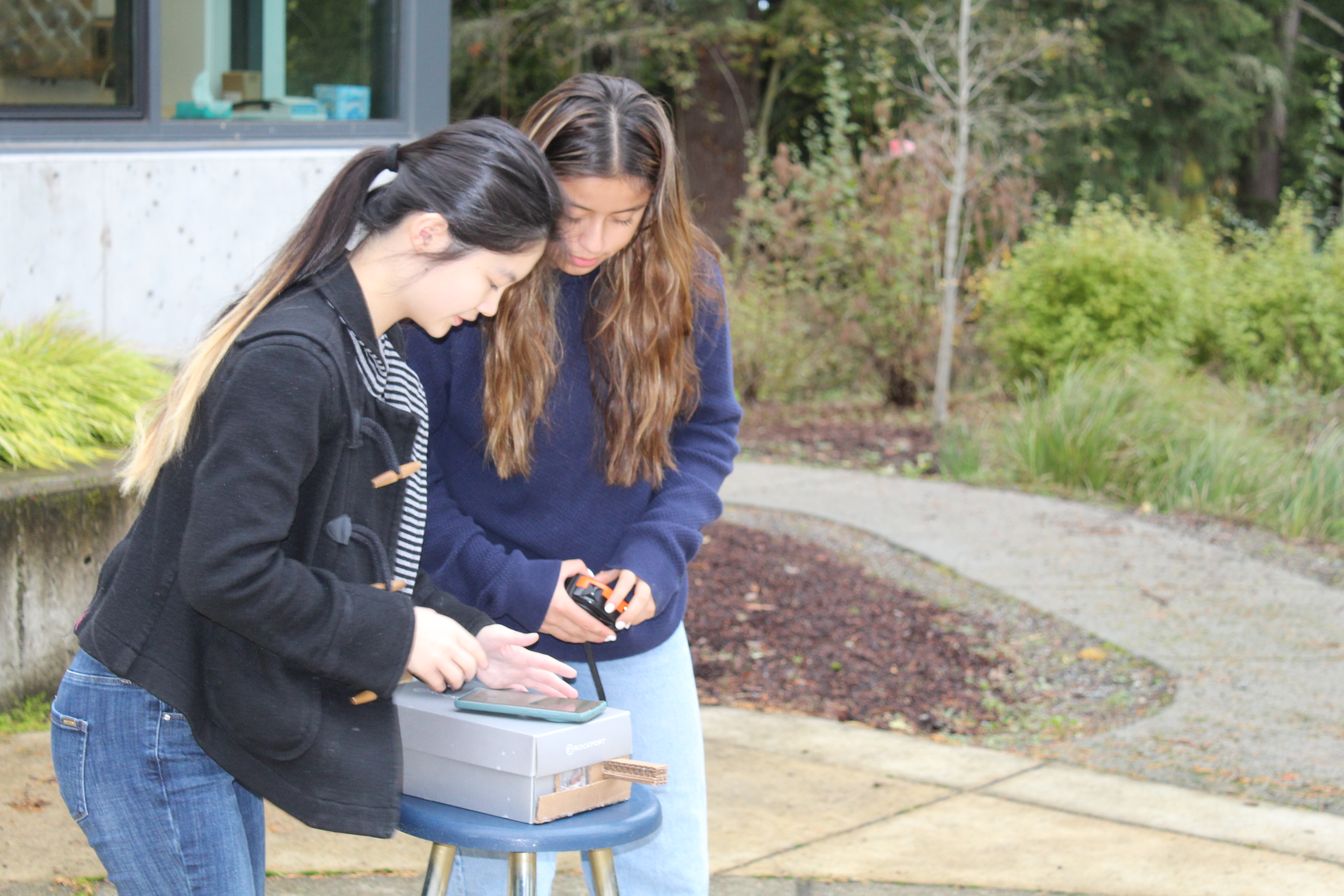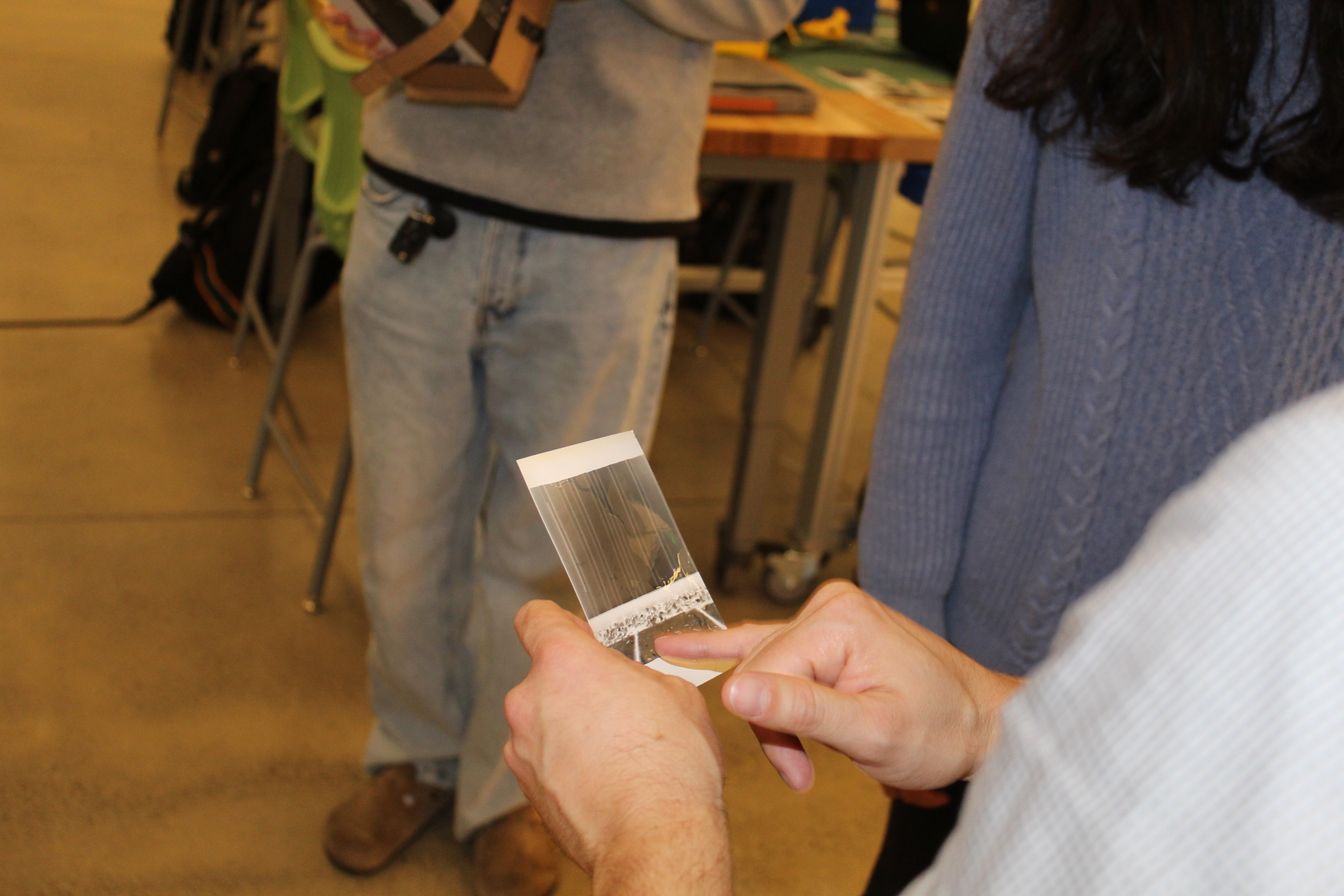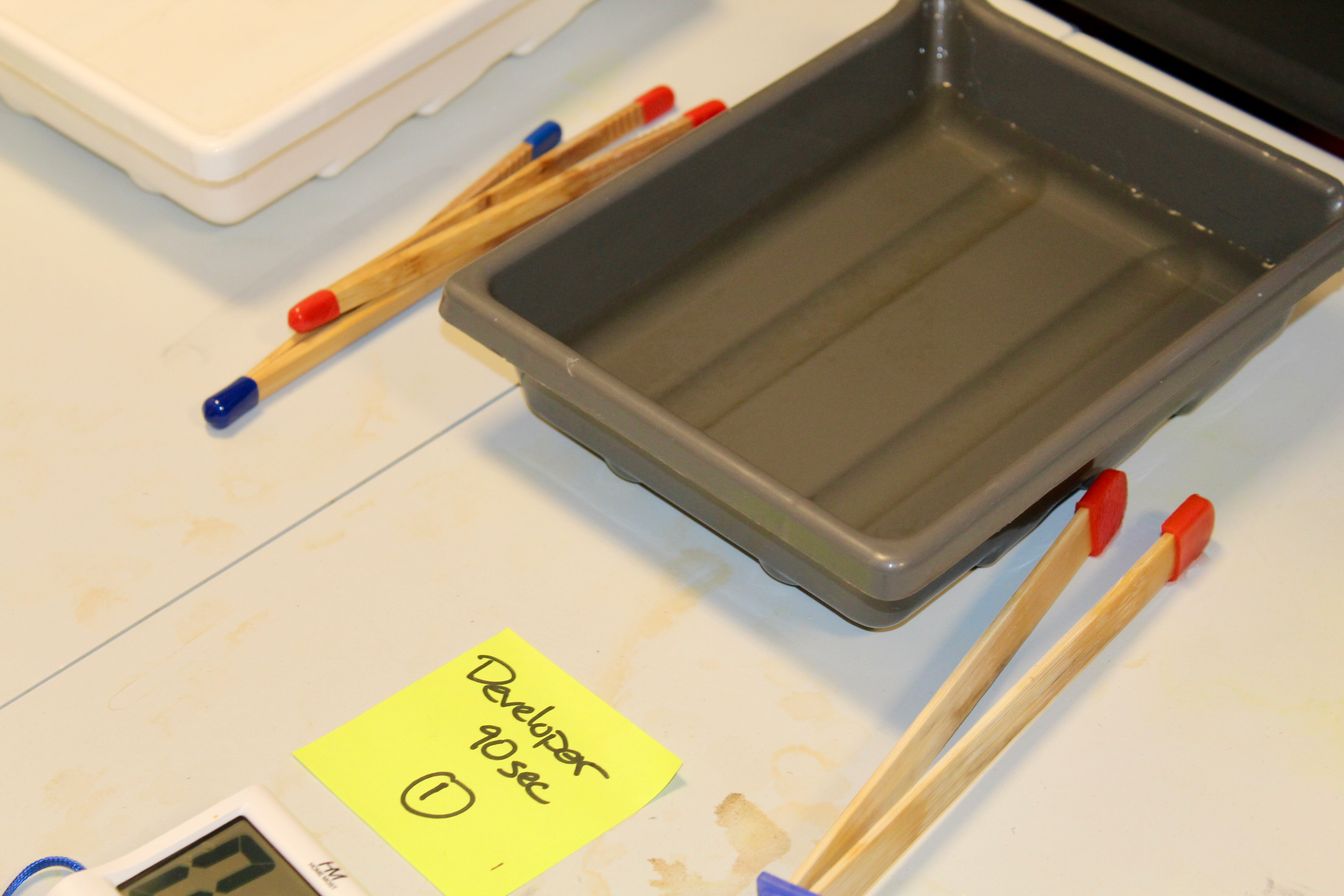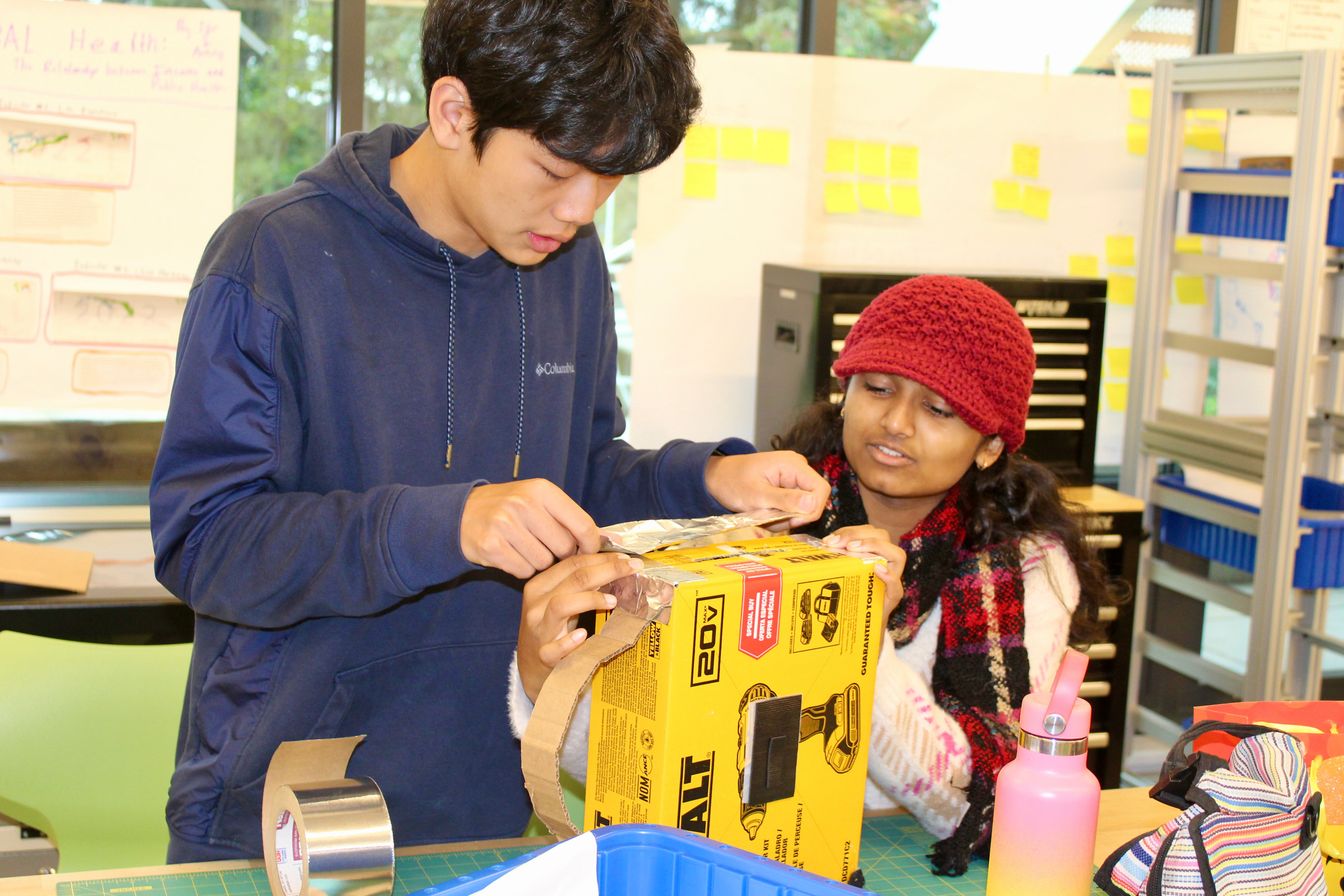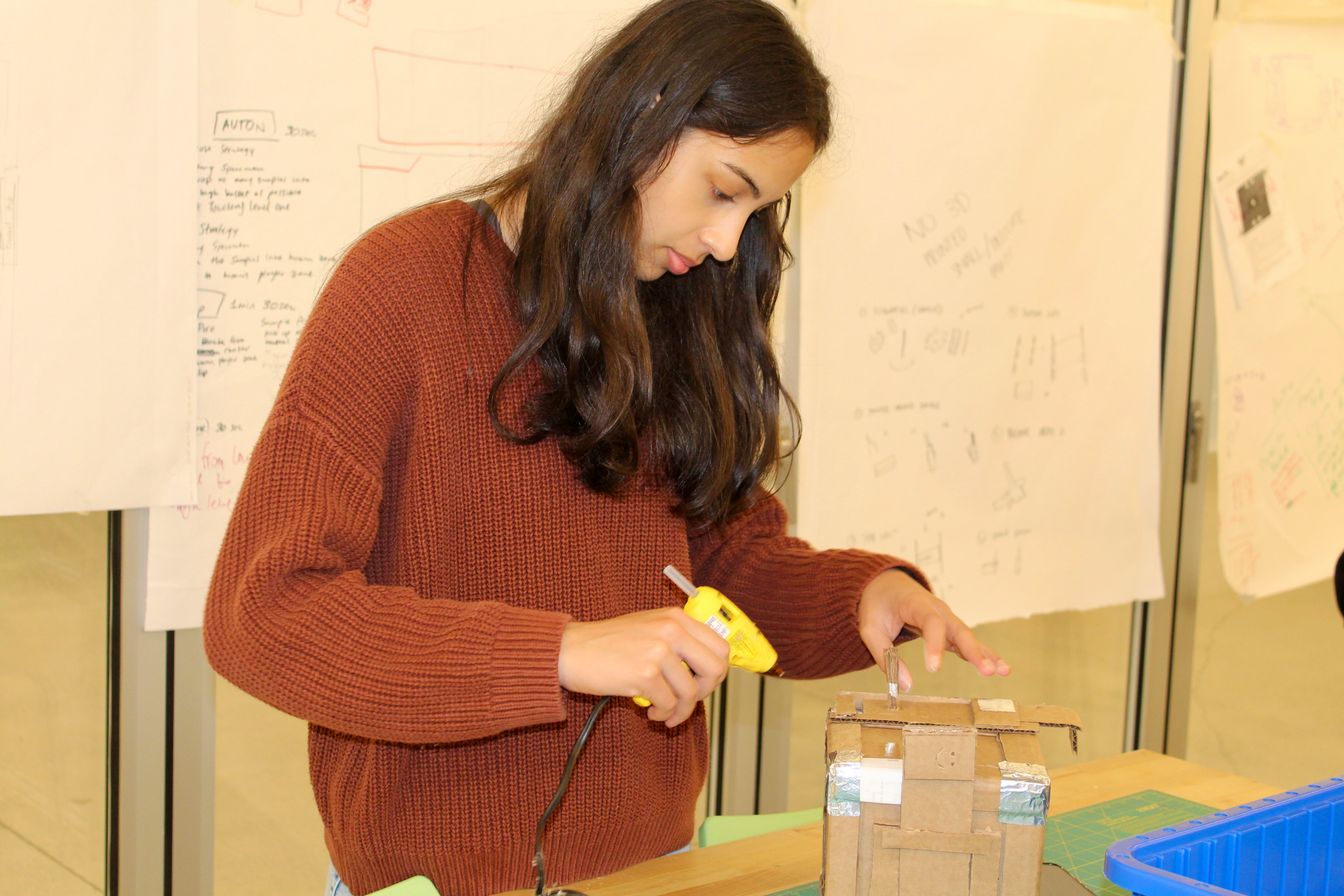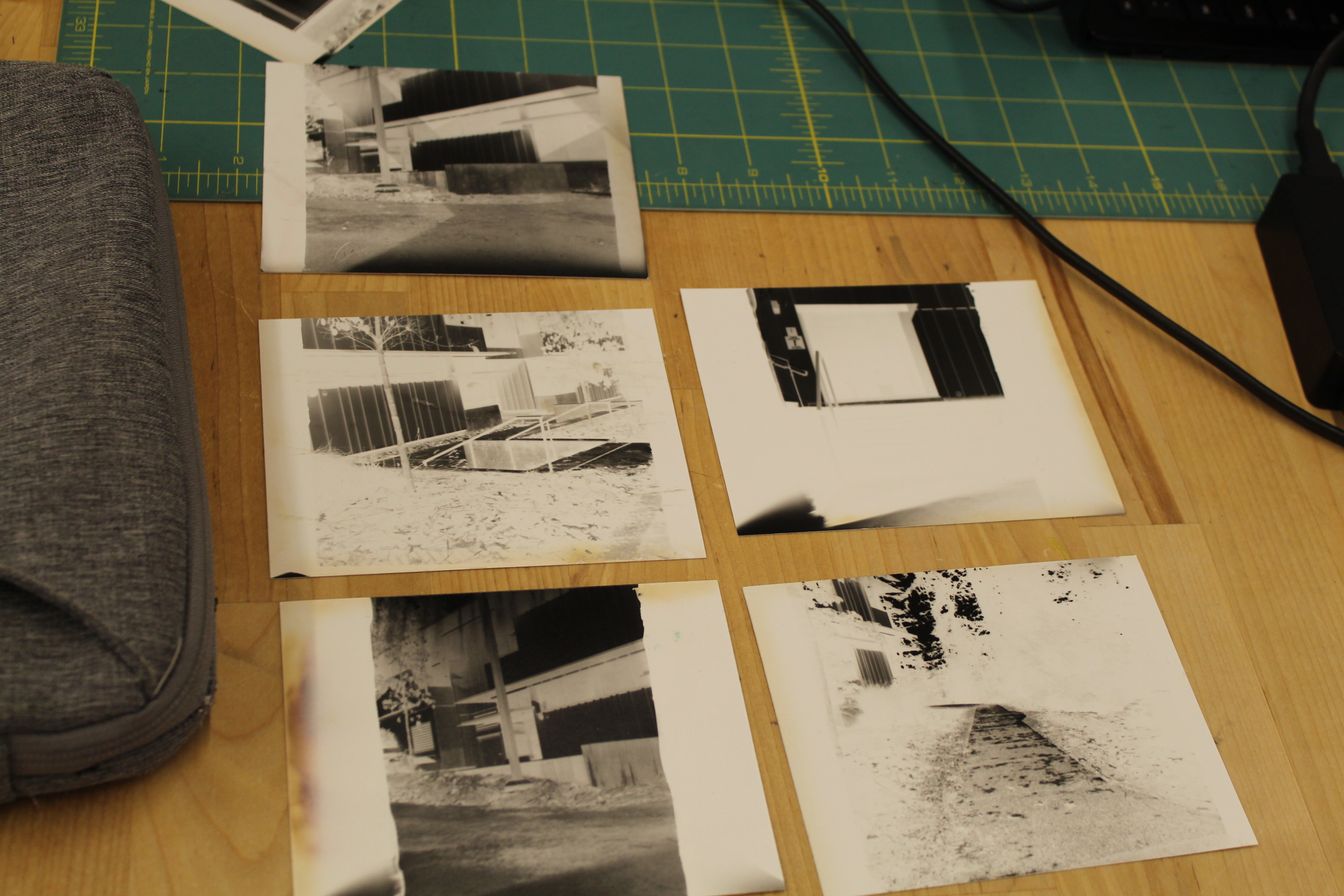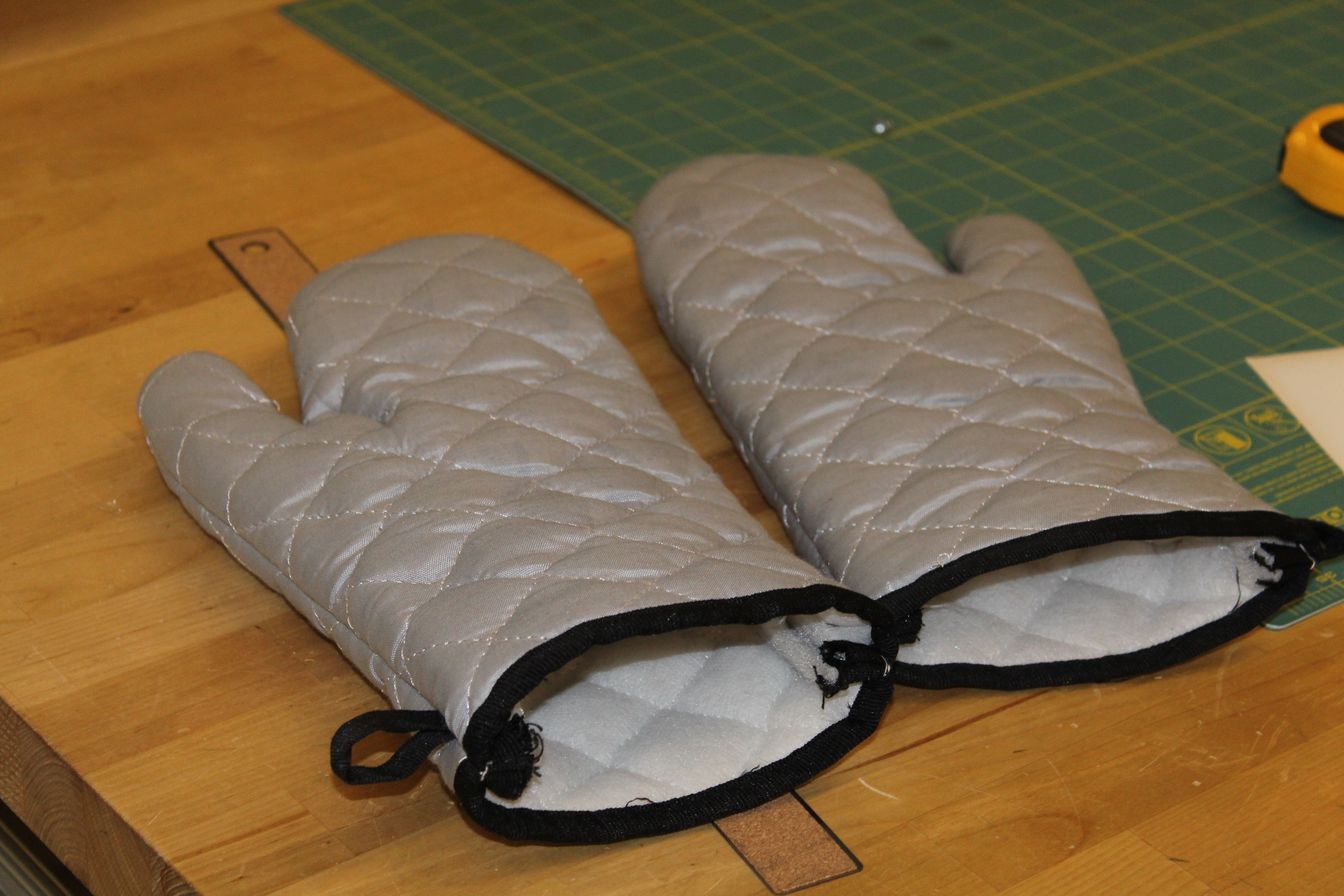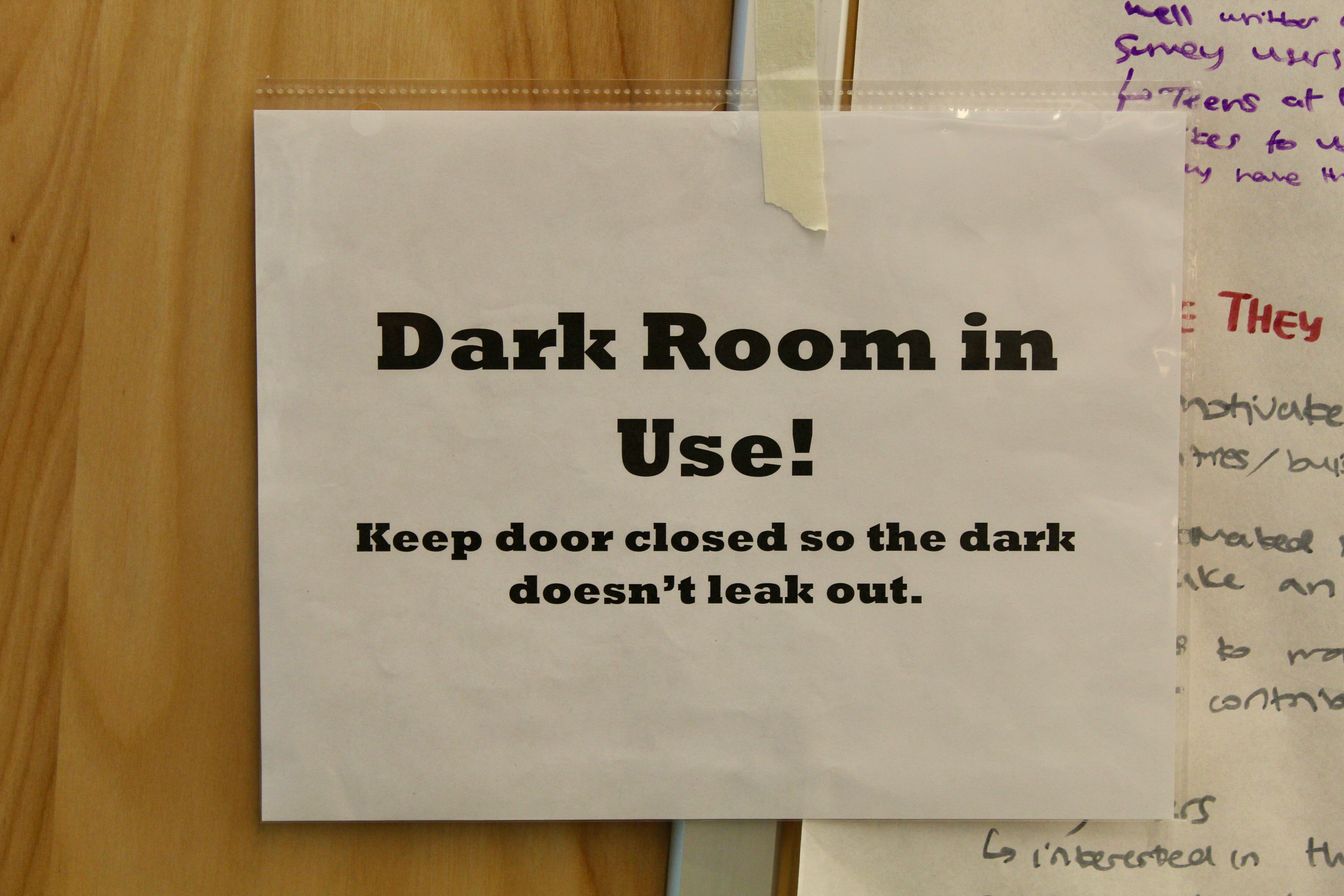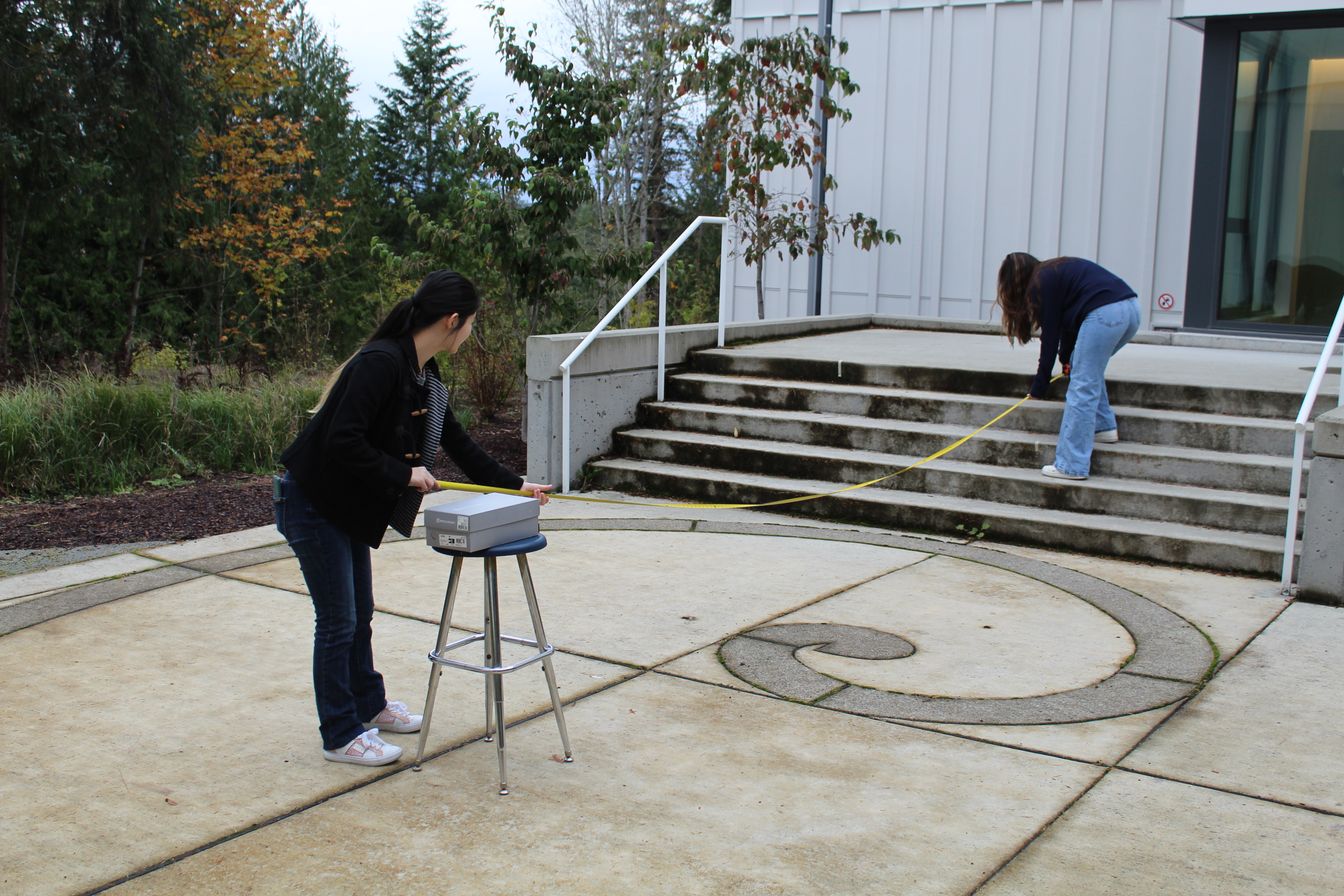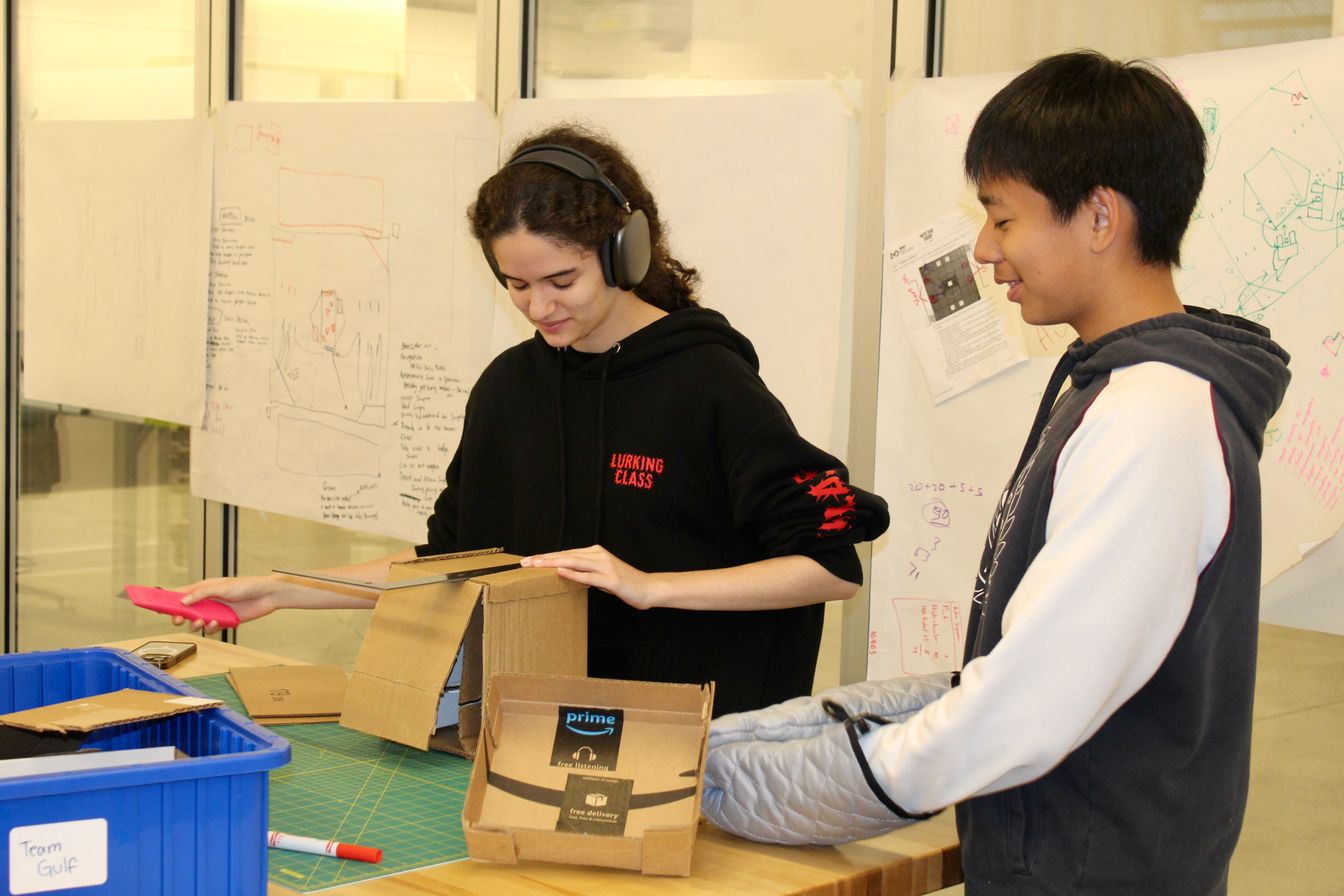- News
Creating the Perfect Picture
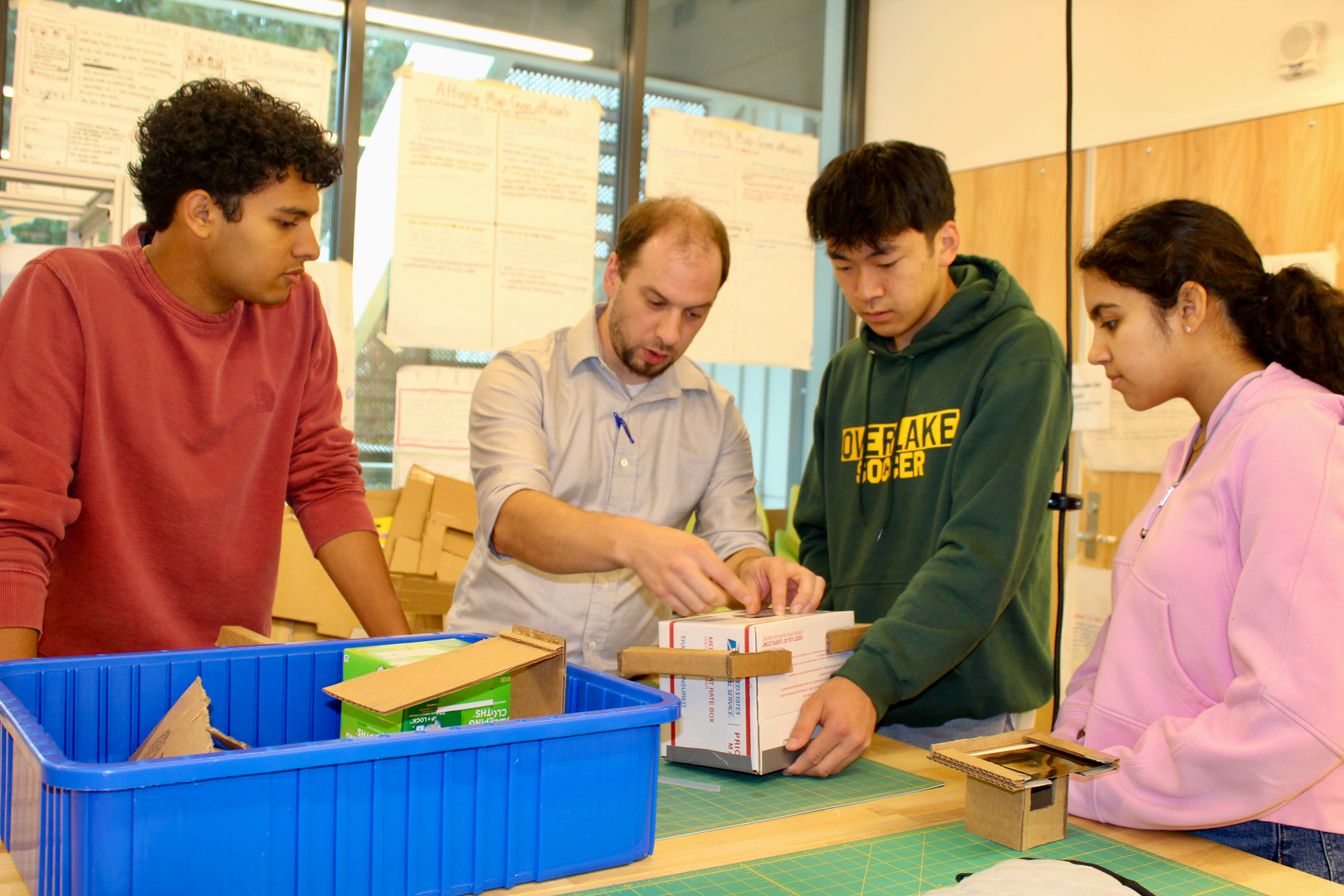
Science teacher Brian Husted likes to say that there is no tinkering in engineering. And with that sentiment in mind, his engineering class set out to design portable pinhole cameras that can be used with people wearing oven mitts. “The oven mitts the students wear while operating the cameras are to understand and empathize with their user,” explains Husted. “We use empathy and user needs at the center of every design challenge and the oven mitts are the way the students can simulate the user experience for testing.”
The design team of seniors Sunny Z. and Andy Q. had to reconfigure their original dimensions of the camera to take into account the use of the mitts. “We changed our overall sizing to 8 inches long to put our film base at 6 inches and kept that sizing in mind throughout for our mitts,” explains Sunny.
“This particular project is around human-centered design and that we are designing a product with the end user in mind,” says senior Elle Y., who paired with sophomore Carolina R. for this design challenge. “We tried handling all the materials with oven mitts first,” explains Carolina. “So, we tried to see how hard it is to pick up from the table and then we decided that we had to make big objects that are easy to move.”
After six weeks, the pairs of students are able to test the usability of their portable pinhole cameras, by taking actual black and white pictures adjusting the aperture and exposure time of their home-made cameras in order to capture the best photo. “I know I spent countless hours in here trying to get the photo” says Sunny. “I made it a goal sometime to not leave until I got a good exposure time.”
“I think the hardest part was the insertion of the film because the film is such a thin piece of paper and with the oven mitts it is hard to handle,” says Elle. “So, we needed to figure out a way to insert the film and hold it in place to not move the entire time.”
Besides creating a camera from scratch, the students also needed to create an instructions manual for building and using the camera, keeping in mind the end user. “This is the first time students are having to try to write technical communication, which is different from writing in prose for their English classes,” says Husted. “They are trying to convey each step of the process in a way that is simple and intuitive for the person building the camera and/or the user of the camera.”
“I feel like in our English classes we are often told not to say everything,” explains senior Andy Q. “But in this, you have to be very clear and specific. It’s very different than the language we use in our other classes.”
“We took photos of the process in making the box, so then we used the photos to illustrate how to construct the camera,” explains Carolina. “We’re backtracing our own steps and writing them down.”
Additionally, before the teams were formed, each student took a personality test online to determine what type of designer they are. “I hope that the students are learning to work with their team and collaborate in this process,” says Husted. “Diverse teams produce better results, even though they may take longer and have conflict. At the end of the challenge, we will reflect on this again to share how the students thought they did, and they will complete self and peer assessments of how their teams worked.”
And Husted says because of the variety of personalities and individuals, each camera was designed distinctly different. “This is the first year that I’ve had such a large class for engineering (19 students) and I really appreciate having more types of thinkers in the room and the vast diversity of camera designs. It has been particularly difficult for the students to understand that every design is ‘good’ if they can justify it based on the needs of the user and that they have a functional camera.”

